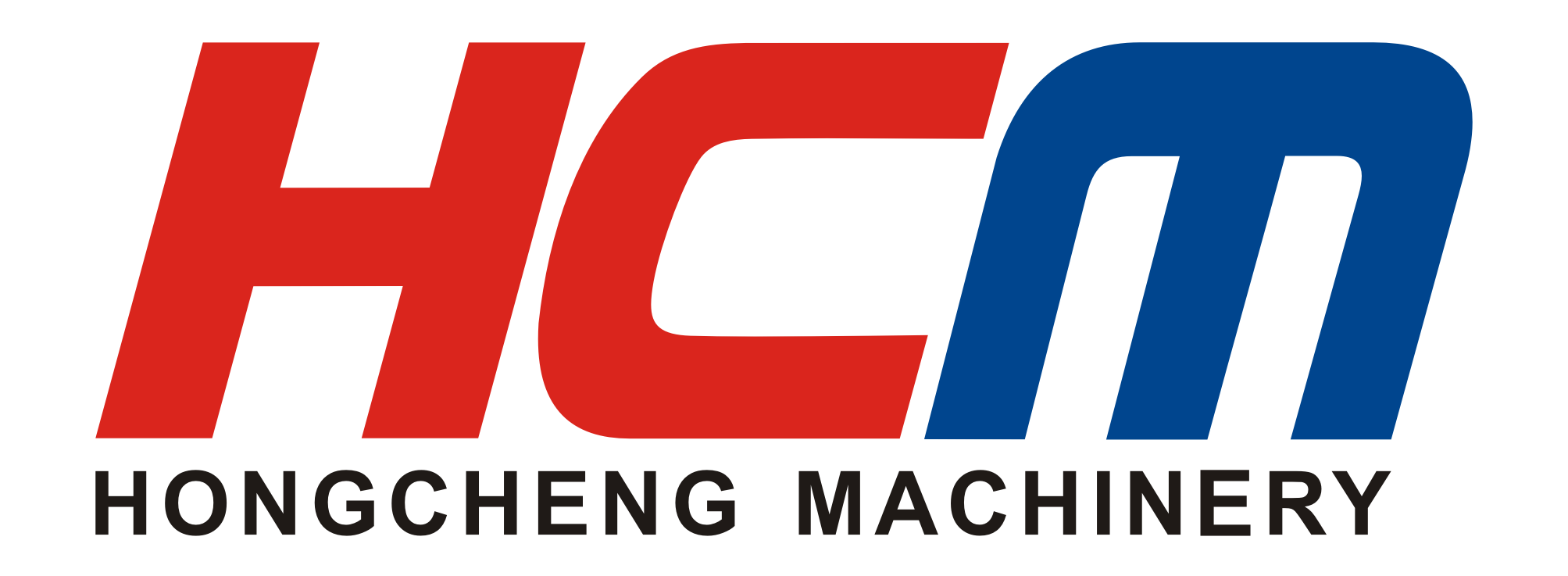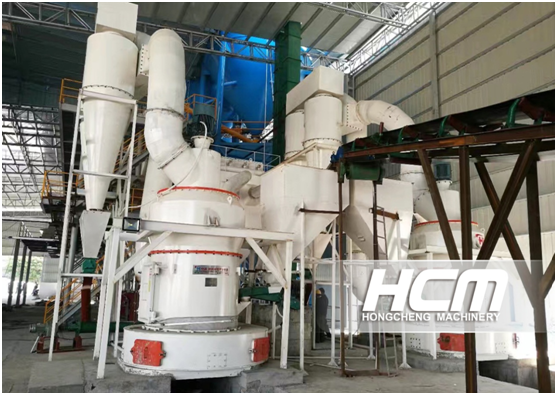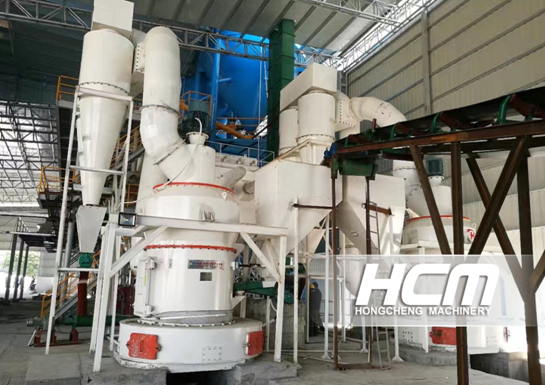
- all
- product
- blog
- all
- product
- blog
Details
Raymond Roller Mill for the Powder Preparation of Activated Carbon
-
Details -
Parameters -
Case -
Maintenance -
Inquiry
Raymond Roller Mill for the Powder Preparation of Activated Carbon

Activated carbon is a black and porous solid carbon. As to the component, it mainly consists of carbon, but still a little elements such as oxygen, hydrogen, sulfur, nitrogen, chlorine, etc. The specific surface area of ordinary activated carbon is between 500 and 1700 m 2 /g. Excellent in adsorption, it is an industrial adsorbent with a wide range of application. And Guilin Hongcheng can provide a variety of grinding mills for the powder preparation of activated carbon as well as can make a complete and high-quality powder-making solutions.
Ⅰ. Types of activated carbon:
1. Wood activated carbon: made of wood chips, charcoal, etc.
2. Netshell activated carbon: made of coconut shell, walnut shell, apricot shell, etc.
3. Coal-based activated carbon: made of lignite, peat, bituminous coal, anthracite, etc.
4. Petroleum-based activated carbon: pitch-based activated carbon made of pitch.
5. Regenerated activated carbon: made of used carbon that has been regenerated.
Ⅱ. The main usages:
1. Household activated carbon
Air purification:
Be placed in doors to effectively absorb harmful substances such as formaldehyde or xylene in the air (especially newly renovated houses).
Deodorization of furniture :
Be applied in the cabinet, drawer, and refrigerator of the newly bought furniture and be placed in the shoes to remove the smell.
Deodorization of cars:
Effectively remove harmful substances and the smell that is unpleasant and pungent in new cars.
2. The exhaustion and adsorption in the plant of sewage treatment ;
3. The treatment of beverage ;
4. The pre-treatment of power plant water ;
5. The pre-treatment of waste water;
6. The sewage treatment by biological method.
It is often necessary to grind activated carbon into powders in the field of application so as to make better use of it. And as we can see, presently, Guilin Hongcheng’s HCQ-series grinding mill is widely used to grind activated carbon.
HCQ-series grinding mill is used to grind minerals in fields such as metallurgy, building materials, chemical industry, and mining. It is suitable for processing non-flammable and explosive minerals with Mohs hardness below 7 and moisture below 6% such as limestone, calcite, activated carbon, talc, dolomite, titanium dioxide, quartz, bauxite, marble, feldspar, barite, fluorite, gypsum, ilmenite, phosphate, clay, graphite, clay, kaolin , diabase, coal gangue, wollastonite, slaked lime, zircon sand, bentonite, manganese ore, etc. And the fineness of finished product can be freely adjusted between 0.18-0.038 mm (80-400 mesh).
HCQ-series grinding mill is a new machine innovated by Guilin Hongcheng’s Research Center of Powder-making Equipment based on the R-series pendulum grinding mill. Components are configured scientifically and reasonably. Some of them are the main unit, classifiers, blowers, piping systems, feeders, etc. Such a configuration greatly improves the overall performance of the equipment, namely, smoother operation, easier maintenance, and higher productivity!
Using this type of device to grind activated carbon can win praise from a majority of enterprises due to dust-free workshop, automatic production on the whole, reduction of labor costs from customers and improvement of productivity.

The daily inspection items of the milling machine:
1. Regularly listening to the normal operation sound of the mill and the classifier, and whether there is any abnormal sound.
2. Checking if the reducer and other equipment has any oil leakage, water leakage or material leakage?
3. Checking the wear of the tie rod seal every month.
4. Regularly check the function of the scraper and returning system.
5. Checking the pumping station every day, including: oil level of the fuel tank and refueling if necessary. The oil should be in accordance with the specified oil; check the pressure of each pressure gauge; check whether the filters are blocked.
6. Checking the oil return condition of the grinding roller lubrication station and whether the oil filling pressure is normal.
7. Always check the oil pipes and valves for oil leakage.
8. Measuring the wear of the grinding disc and the grinding roller liner each 1000H, and make a record.
9. Checking the pressure of the accumulator once a week.
10. Regularly check the center frame, nozzle ring, air guiding vane, water spray pipe and other grinding accessories.
Grinding Mill maintenance:
1. There should be a fixed person responsible for operation in using process, the operator must equipped with professional technical knowledge. Before the installation, the operator must carry out the necessary technical training to understand the principle performance of the mill and familiar with the operating procedures.
2. In order to keep the mill in good condition, the "safe operation system for equipment maintenance" should be established, and necessary maintenance tools as well as grease and corresponding accessories should be provided.
3. After using the grinding machine for a period of time, it should be repaired and maintained. Meanwhile, the wearing parts such as grinding rolls, grinding rings and blades should be repaired and replaced. The grinding roller device should be carefully check the connection bolt nut before use and after, see if there is looseness, whether the grease is sufficient. The refueling tools are available with manual refueling pumps and grease guns.
4. The grinding roller device of the mill needs to be replaced after using for more than 500 hours. When the grinding rolls are replaced, the rolling bearings in the sleeve must be cleaned.
5. According to the size of the material, soft and hard, water content, specific gravity, the processing thickness is also different. The analyzer of the mill, high speed, high fineness, low speed and low fineness can be adjusted. Increase the fineness and the output will be reduced accordingly. If the requirements are not met, the fan speed should be debugged and the user can flexibly master it.
6. The scrapping limit of the grinding roller ring of the mill, the remaining minimum wall thickness shall not be less than 10mm.
7. The feed should be stopped when the mill stops, and the main machine continues to grind. The motor of the main unit and the motor of the analyzer can be turned off to stop the grinding work after about one minute. After that, the blower motor is stopped to purge the remaining powder.
- Detailed introduction of Raymond mill: Blade + grinding roller + grinding ring to produce fine powde
- GUILIN HONGCHENG TITANIUM DIOXIDE PENDULUM RAYMOND ROLLER BOWL MILL
- MANGANESE ORE DRYER MANUFACTURES MnO RAYMOND ROLLER MILL FOR SALE
- CHINA CHEAP 5R MATTE ORE MIKRO POWDER RAYMOND GRINDING MILL SALE PRICE



